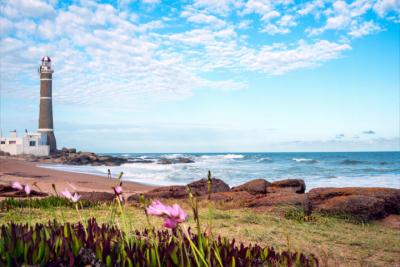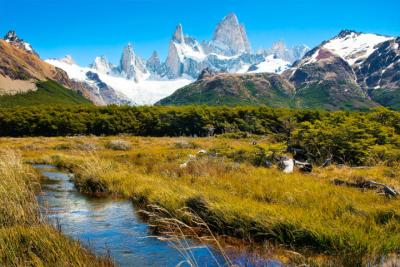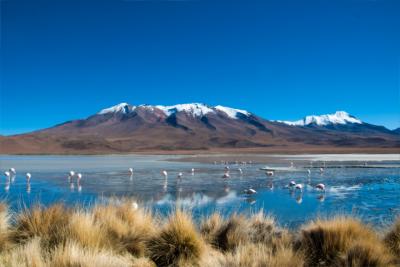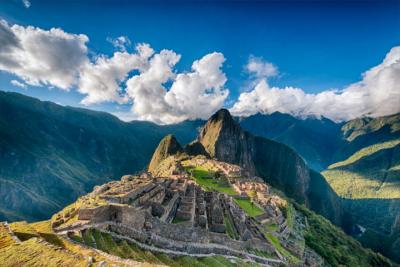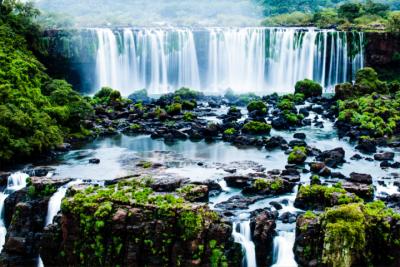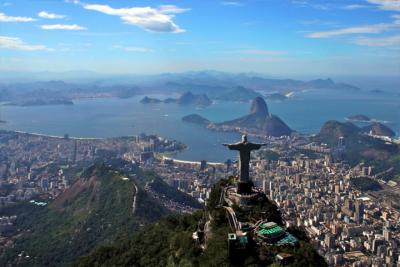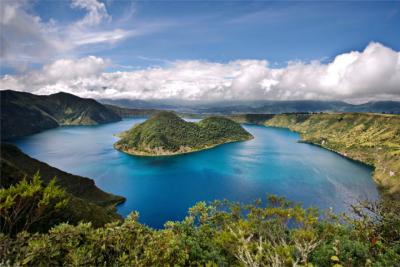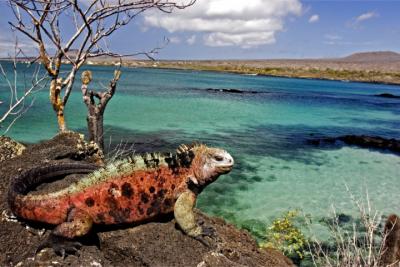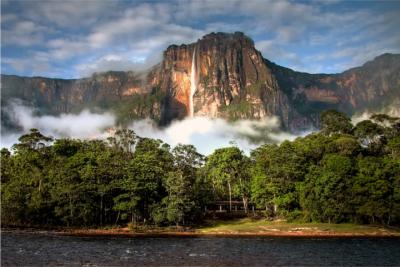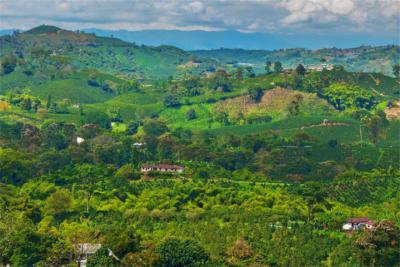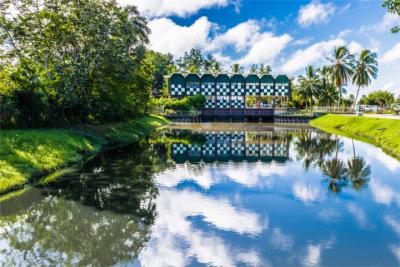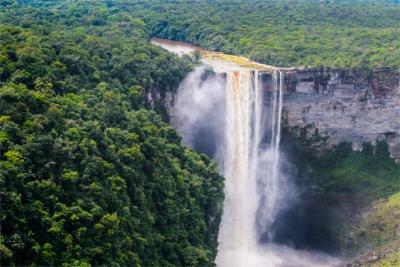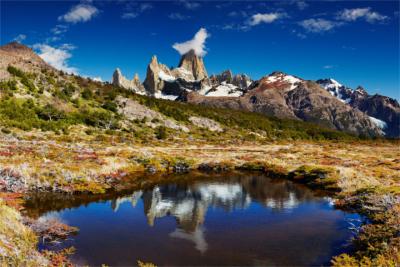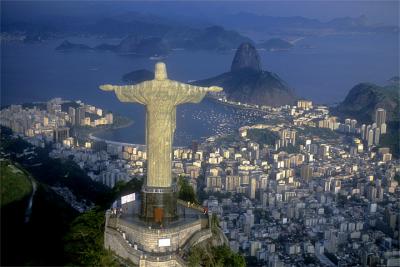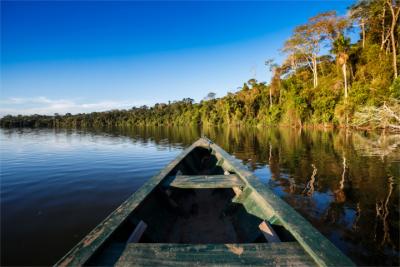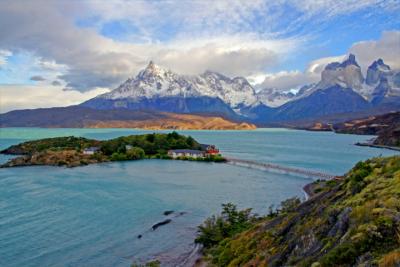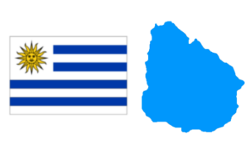Travel Offers
Travelmyne Featureprint
Distance
Uruguay – Dance, Gauchos and Beautiful Beaches
The Latin American passion for dancing is ever-present in Uruguay. The country is known for the farming of cattle, which are reared on the vast steppes of the Pampas by the gauchos, the South American cowboys. Especially its beautiful beaches make Uruguay an attractive travel destination.

Geography - Plains and hills cross the country
The South American state Uruguay is located between Argentina and Brazil. It borders on the Atlantic Ocean in the east. Large areas of the country are characterised by vast, flat plains. In the centre and the north of Uruguay hills cross the landscape with the Cerro Catedral (514 m) as the highest point. The Uruguay River and the Río de la Plata, which constitutes the border to Argentina, are the country's greatest rivers. The climate is subtropical to temperate with average temperatures between 10 and 22 °C.

Nature - Vast steppes and coasts rich in wildlife
The vast steppes of the Pampas are typical of Uruguay. This barren environment is mostly vegetated by prairie grasses and the occasional shrub or tree. You repeatedly see single rocks protruding from the ground. Numerous herds of cattle browse the steppes. The region around the Uruguay River consist of fertile alluvial land. The soils of the well watered country are generally suited for agriculture and are used intensively for this purpose. Pumas, tapirs, deer and anteaters are members of the local fauna. Especially the coasts are populated by whales, dolphins, seals and huge stocks of harbour seals and sea lions. Uruguay's wonderful, fine beaches offer great conditions for relaxation.

Natural sights - First-rate beaches
One of South America's most luxurious holiday destinations is Punta del Este, which is located on a peninsula at the mouth of the Rio de la Plata. You find more beaches along the rivers, which invite visitors to swim. Piriápolis and Punta del Diablo are appealing baths at the seaside. The Santa Teresa National Park with its many campsites, beautiful beaches and unspoiled nature is popular with travellers who want to be close to nature. The hot springs near Salto are a great location for relaxing. Starting from the town Minas, you can go on long hiking tours through the hilly landscape. Fascinating natural formations are the gorges in the Quebrada de los Cuervos National Park. At the coast near Cabo Polonio you have a great view of a gigantic sea lion colony. It is followed by a fascinating landscape with huge shifting sand dunes, which reach height of up to 50 metres. Those who climb the Buena Vista Hill, for example, are rewarded with a fantastic view of the ocean. A true rarity is the so-called ombu forest, which consists of solitary trees. Only in a little number of places on earth you find hundreds of these plants growing in one spot.

Culture - Dance and cattle farming
Uruguay's territory was populated by nomadic tribes for a long period. Permanent, great settlements only emerged when the Spanish arrived in 1516. Due to its production of beef, Uruguay had achieved affluence by the 1950s. Since the meat price dropped, Uruguay has been looking for new economic prospects. But the inhabitants do not lose their lust for life anyway. Instead, they pursue their greatest passion, dancing tango. The dance is said to have roots not only in Argentina but also in Uruguay. The gauchos, the South American version of the cattle-herding cowboys, are also common in this country.

Cultural sights - Montevideo as the country's heart
The capital Montevideo lies at the mouth of the Rio de la Plata. It is without doubt the country's heart. 1.3 million people, which is the largest part of the population, live there. That the country was once very wealthy is apparent in the many magnificent buildings such as the parliament building Palacio Legislativo, which is lined with over 20 kids of marble, the Palacio Salvo, the remains of the former town wall in Ciudadela, the Plaza Independencia and the Artigas Mausoleum, which was build in honour of the freedom fighter José Artigas. Montevideo also has a beautiful beach promenade, which you can watch walking along the street La Rambla. Among the city's many markets, the Tristan Narvajo is particularly worth seeing. Visitors who have had enough of Montevideo's vibrant city life can take a trip to the nice little town Colonia del Sacramento, which has historical charm due to its Portuguese colonial houses from the 18th century and its cobbled streets. You should definitely not miss out on the fortresses San Miguel, San Pedro and Santa Ritam, and the remains of the town wall. 13 fortresses at the eastern bank of the Uruguay River, which were built in the 19th century, tell of Uruguay's struggle for independence.

Experience - Living as a gaucho
Riding with the gauchos and mustering the cattle, helping on the farm and enjoying hearty local food at the campfire – Uruguay is the perfect place for participating in the life on an estancia, a South American ranch (for example in Rocha). Visitors gain a first-hand insight of the everyday life in livestock farming there. One fact which is not surprising: the people in Uruguay have a preference for beef. You can watch its preparation in one of the many grill restaurants. Pizza, pasta and fish are also common dishes of the country's cuisine. A traditional place for local food is the Mercado del Puerto in Montevideo. The delight in dancing, especially in tango, is also characteristic of Uruguay. There is a wide range of entertainment facilities in the evening such as many discos, bars and clubs. You get a unique, authentic impression of the population's love for tango in Ciudad Vieja, Montevideo's old town. In addition, the town La Paloma is known for its beaches and parties. Uruguay is a great location for strolling through shopping streets with boutiques and cafés or over farmers' markets and jumble sales. This way, you can buy local goods like leatherware, jewellery, woollen goods or antiquities.

Activities - Relaxation and action at the beach
Uruguay is blessed with beautiful, fine beaches. These invite visitors to relax, dream and swim. You can also do water sports of many kinds – surfing, sailing, water skiing and fishing. Furthermore, holidaymakers enjoy sailing and boating on the rivers and there are many harbours and boat bridges. Uruguay is also the ideal destination for horse riding and hiking. In the evening, you can learn about the secrets of tango in a dancing course.

Information
Holidaymakers most commonly arrive at the airport in Montevideo (MVD). By ship or by the overland route, you can easily and quickly travel from Buenos Aires (Argentina) to Montevideo. Buses and taxis are a suitable means of transport for moving around within Uruguay. You can communicate in Spanish.
Uruguay is the ideal location for taking part in the native life of the gauchos or exploring the vast steppes of the Pampas. At the same time well-developed beaches invite visitors to relax in the sun. Holidaymakers can also dive into the Latin American sense of life with music and dance in a country which is not yet overcrowded by tourists.

